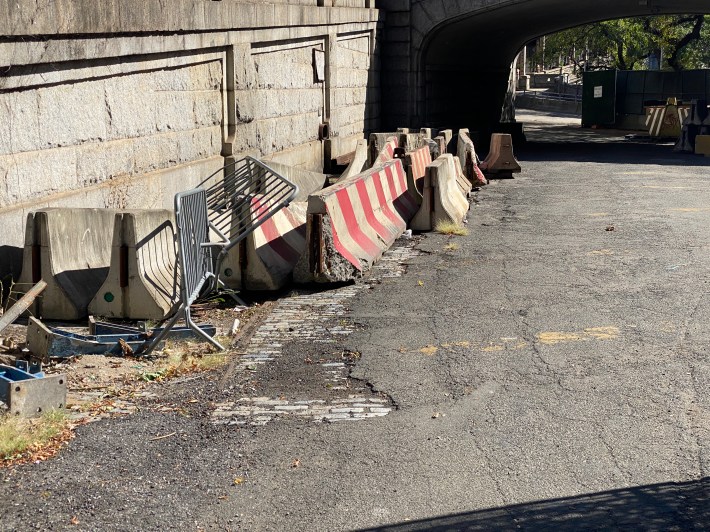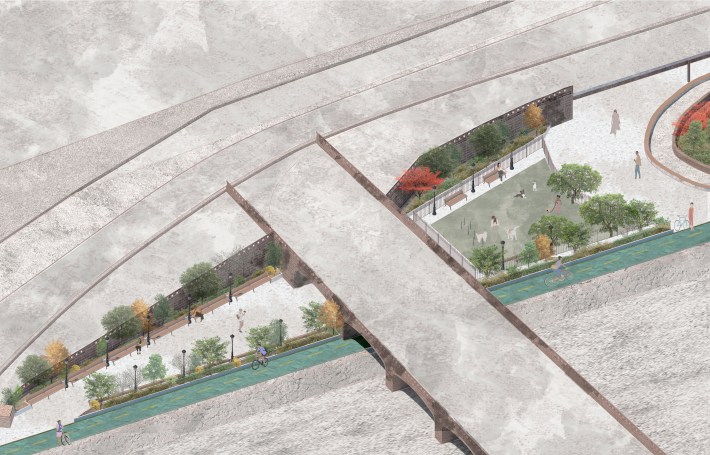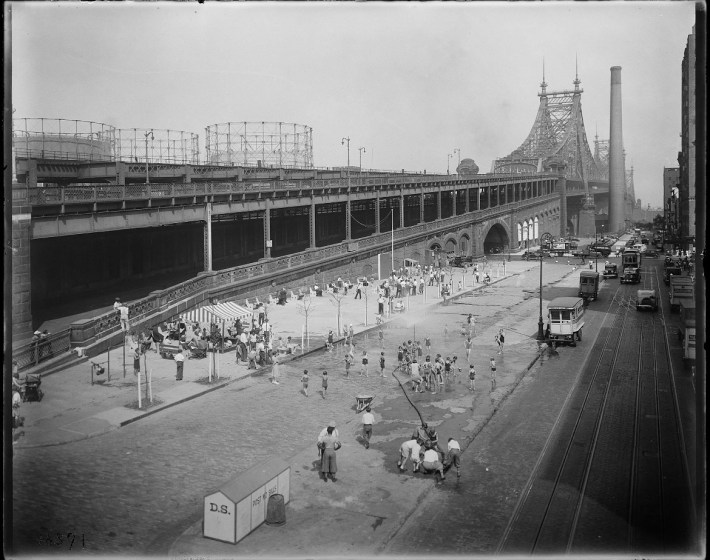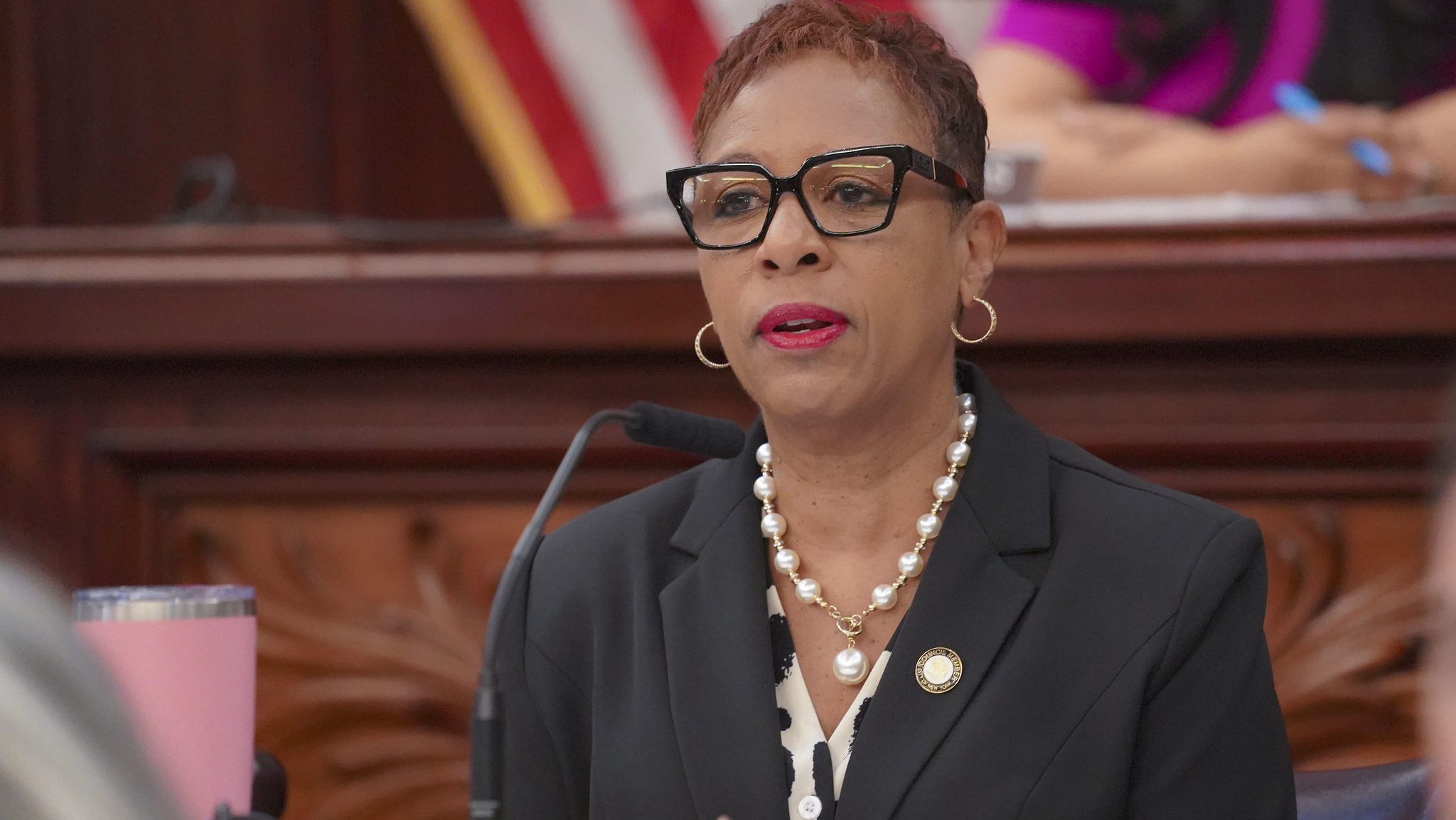An underused city lot next to the Queensboro Bridge in Manhattan should be restored as public space, especially now that there's a new pedestrian path over the span, locals said.
The Department of Transportation has long used space just to the west of the corner of Second Avenue and E. 59th Street for parking, storage and maintenance, but most of the time it just sits empty, according to residents pushing to restore it as an amenity for the dense Midtown neighborhood.
"There's a lot of trash around it, they don't clean it well or maintain it well – but even more offensive to me is that they're not using it," said Sean Basinski, who has lived nearby for three decades. "Along the side of the bridge with the arch overhead, it could be a really fantastic space."
The triangular lot runs from Second Avenue down under an on-ramp to the bridge, and is fenced off, though on a recent visit, the gates were left wide open revealing some street paraphernalia like jersey barriers and orange plastic barrels.

The blacktop was receding at the corner, revealing the old stone pavers and tracks from the bygone era when trolleys traveled over the bridge.

The lots lead to the former on-ramp to the Queensboro Bridge's south outer roadway, which Mayor Adams repurposed from a car lane to a pedestrian path this spring after years of delays.
The footpath should spur the city to open the space right next to it too, according to Basinski.
"Why not just have people continue along here, is this the time to open up this space," the Manhattanite asked.
The lots sit right next to the pocket-sized Honey Locust Park. Basinski and other locals have been lobbying the city for nearly two years to connect the spaces, with an online petition accompanied by renderings of what that could look like.
The Honey Locust Park Extension, as they call it, could instead of a dump serve as a park, dog run or outdoor café seating, as much of the land next to the 116-year-old span has become usurped by city agencies and private businesses.
"Let the people here work out what they want done with that space, involve the community," said Paul Krikler, a local advocate. "[There’s] tons of ideas. Every time we talk to people, new ideas come out."

DOT has been resistant to relinquishing up the space, Basinski said. Officials admitted to him that they are not using the lot right now but that they may need to in the future, according to Basinski.
"It's not good to just keep it for a rainy day that may never come, that doesn't make sense," he said.
The call for a revamp got the backing of elected officials in the area, who wrote to Commissioner Ydanis Rodriguez last year urging him to swap out fencing and roadway detritus for a public amenity [PDF], and the area's Council member told Streetsblog that the crowded neighborhood needs any space it can get.
"I have continually urged the Department of Transportation to expand the park, turning unused land into more vital open space for East Siders. To make this a reality, the city must review alternative maintenance facilities," Julie Menin said in a statement.
The agency recently calmed traffic on the block of E. 59th Street as part of the south outer roadway's pedestrianization by converting it to one-way east for cars, except for authorized vehicles, and adding painted pedestrian extensions.
Opening the vacant lots would bring the area closer to its early 20th-century glory. Just look what it was like 91 years ago!

DOT already has a lot for vehicles further downhill, which extends underneath the bridge arches. There's also a storage facility behind a garage door at the end of the shoulder path.
"It just takes somebody in a position of power to say, 'OK, let’s do it," said Krikler.
The remaining sections of the space adjacent to the bridge are taken up by the Sanitation Department and the Department of Environmental Protection. East of First Avenue, the city has handed over its space to private enterprises, including a T.J. Maxx and a tennis oval. A Trader Joe's occupies the beautiful vaulted Guastavino-tiled space under the arches
The battle for returning space is happening on both sides of the 1909 landmark overpass. Over in Long Island City, Queens, locals and lawmakers are pushing the city to restore the long-shuttered Baby Park, The City reported.
DOT spokesperson Scott Gastel said the agency uses the space on the Manhattan side for repairs, access to bridge facilities, storage and "other operational purposes."






